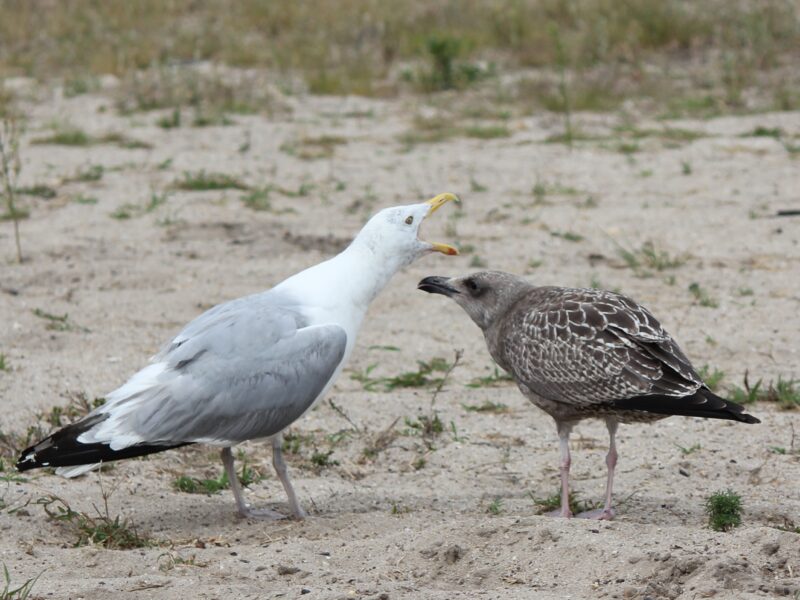
I live near Foster Memorial Beach in Noyac, also known as Long Beach after the road it sits on. It could be called “Gull Beach,” as it is a favorite place for gulls to gather all year round as well as during the summer reproductive season.
No gulls breed there, but several that breed nearby feed there. During migration, north or south, it is a favorite stopping place, as there is almost always feed available. During the worst days of winter, you can always find a gull or two on the beach, or over it, even during the most blustery days.
Gulls are tough creatures. The toughest by far of the 17 or 18 species that inhabit North America is the herring gull, also known as the “seagull,” a common name attributed to several of the visiting gull species. But also used widely to announce the herring gull, the most widely distributed of the bunch.
Gulls can remain in the air for hours on end sailing back and forth without using a single beat of the wings. They can navigate through the windiest of storms, gliding either downwind or upwind. They are not size conscious — the larger gulls gather with the smallest — as during the winter when the Bonaparte’s gulls are on local beaches. It seems that gulls, regardless of species or size, gather together and act similarly.
But there is one thing only the herring gull does that sets it apart from all the others, it drops clams, whelks, large snails and crabs while hovering over a hard surface, roof, road or parking lot, to break them open to get at the soft parts inside. They do this in plain sight of other gull species, but as far as I can tell, none of those other gull species ever copy them. Thus, the herring gull has a food supply all of its own.
And herring gulls not only patronize all of the local beaches. They follow commercial fishing boats back from a catch. They can be found perched on poles, roofs or flying over metropolitan areas, visiting dumps and fields. It seems that every village or town has a resident herring gull or two. They can be messy, but almost no one hates them. Unlike crows, they have long been protected by game wardens against shooting or poisoning.
Almost all gull species are mostly white of feather, while some sport patches of black feathers. You can tell a herring gull, not so much by its feathers, but by the colored spots on its bill and the color of its legs. The herring gull’s legs are flesh-colored and its lower mandible has a red spot on it.
One could say that gulls are marvelously adapted for survival, and that the herring gull is the most adapted of all. Long live the herring gull, Larus argentatus, the leader of the pack.